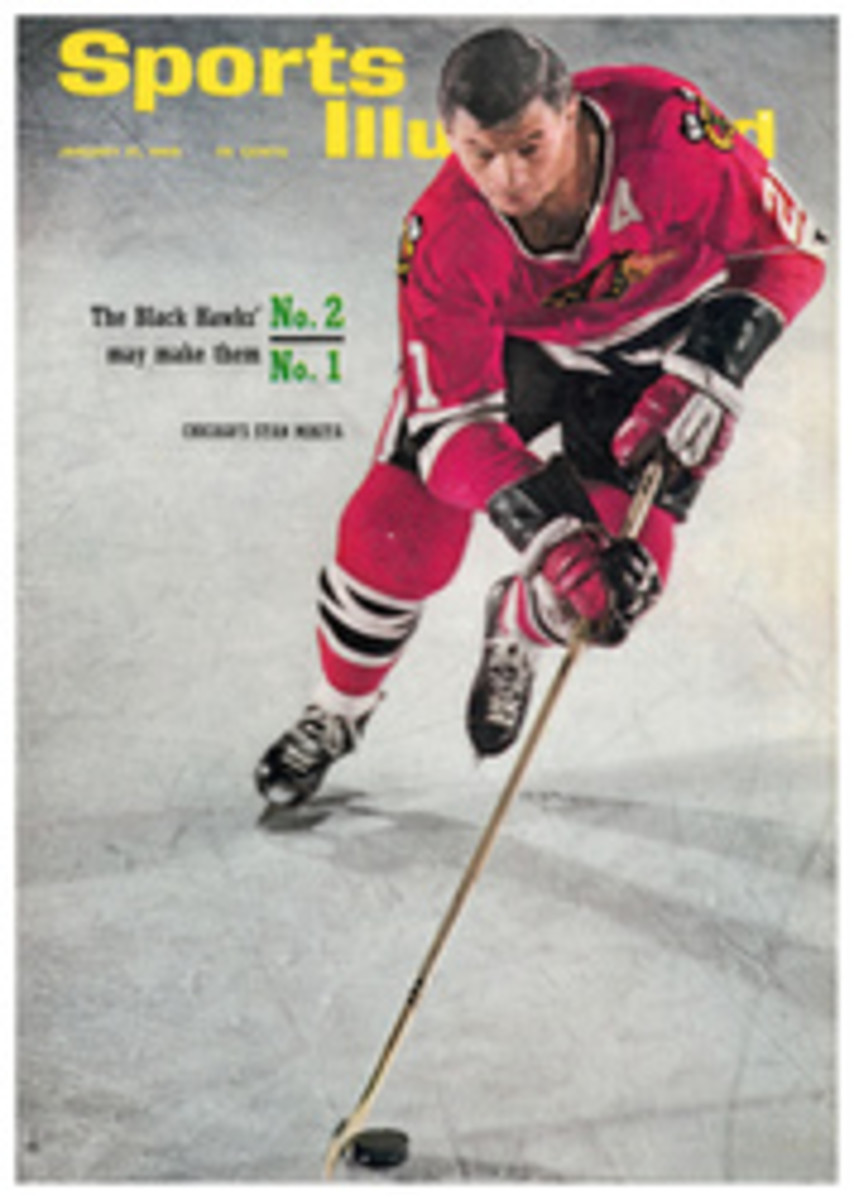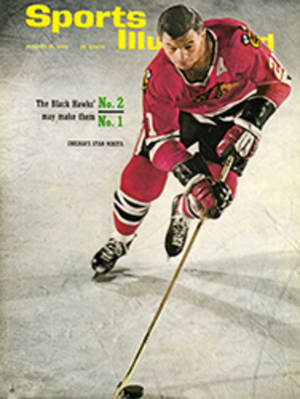
COTTON FIRES UP LITTLE SMOKY
The finest field-trial retriever in the country is National Champion Martens Little Smoky, the 6-year-old Labrador seen at right driving through a cornfield to retrieve a pheasant. In a demanding and expensive sport that grows more competitive every year, Smoky is only half of a championship team. The other team member, who trained and campaigned Smoky for Owner John Olin and guided the dog to victory in the National at Bombay Hook National Wildlife Refuge near Smyrna, Del., is T. W. (Cotton) Pershall, who gives his champion a hand signal in the picture at left. The photographs on the following pages show Smoky in action as he—and Pershall—defeated 44 of the country's top field-trial retrievers in a dog-tiring, four-day competition.
MARK OF A CHAMPION
To take a spirited young retriever and make him into a finished and dependable field-trial champion without sacrificing any of the dog's drive and eagerness is a trying task. One man who has been doing just that for nearly 30 years is Cotton Pershall, the most successful professional trainer in a sport that grows more popular every year with affluent Americans. A husky, 51-year-old Arkansan with sandy hair, Pershall has managed Industrialist-Sportsman John Olin's modern, antiseptic Nilo Kennels in East Alton, Ill. for 14 years and has turned out some 25 champion field-trial Labradors. His record in the Nationals is unassailable—he has qualified 81 dogs for 21 Nationals, won the championship four times (three times with Olin's dogs) and trained two more dogs that went on to win for others. Martens Little Smoky is a typical Pershall champion.
At Pershall's suggestion, John Olin bought Smoky as a 3-year-old from Trainer Frank Hogan of Hayward, Wis. for a reported $1,000, a bargain price, as it turned out. The dog had been bred by Lawrence Martens of Sauk Rapids, Minn., whose strain of Labradors was very much in vogue at the National—five Martens-bred dogs ran in the championship, and two of them, Smoky and Martens Stormy, trained and handled by Pershall, completed all 10 series in the trial.
"Smoky had it from the start," says Pershall. "He had class, which covers most everything—speed, good nose, eagerness—and he was a very brainy dog. Lots of young fireballs just fold up under serious training, but Smoky was the kind of tough dog that could take correction and still enjoy the game." Regarded by most field-trialers as a "gentler trainer than most," Pershall shuns all of the currently popular electronic devices such as shock collars and transistorized radio transmitters. He works his dogs on tests that resemble those encountered in a trial.
"I give a dog 15 minutes in the water, 15 minutes on land and then change the test and start again," Pershall explains. "The dog gets an hour or so of work every day. If he has trouble with a particular test, you stay with it until he gets the message. A good retriever comes equipped with a lot of intelligence, but it takes several years of constant polishing before he really gets field-trial smart. That's why most dogs in a National are 5 or 6 years old, or more." In answer to the common criticism that field-trial retrievers are simply mechanical robots who are whipped into submission, Pershall says: "It doesn't work that way. More than in any other kind of field trial, a retriever trial is a test of the relationship between the dog and the handler. If you can't get close to a dog you can forget about running him in trials, because he's just not liking it and he'll show it sooner or later."
Retriever trials today are more demanding than ever, the quality of dog work is infinitely better than it was 10 years ago and there are more good dogs competing. In fact, the competition has reached the point where any dog that places in a large-entry, open all-age stake anywhere in the U.S. is a major leaguer, whether he ever qualifies for the National or not. Says Bing Grunwald, a longtime trialer: "It used to be that a dog was almost always given straightaway marks [birds that the dog "marks" as they fall through the air] or blinds [planted dead birds that the dog is "handled" to with whistles, hand signals and voice commands]. Now the tests are tougher. The dog must take a finer line from the handler, often on an angle through disconcertingly thick cover, and still get to a mark on his own and to a blind with little handling."
So tough is the competition that of the some 2,500 dogs that ran in 124 open all-age stakes in the U.S. in 1965 only 55 managed to earn the required seven points (including a five-point win) to qualify for the National.
Despite the prominence of professional handlers, a growing number of amateurs, most of them with professionally trained dogs, arc doing surprisingly well on the trial circuit.
But few owners or, for that matter, few professional trainers have the grounds and the financial backing that Cotton Pershall enjoys. There are currently 10 field-trial champions at Nilo Kennels and a bevy of promising young prospects coming up. Thus it was not surprising when Pershall arrived at Bombay Hook with four Labradors in the back of his station wagon. Three of them completed the trial, but it was only Smoky who, as Pershall says, "just couldn't put a wrong foot down."
"The tests in a retriever trial are the fairest of all field trials," says James B. Jackson, the president of the 1965 National. "The only variables are wind, light and the length of the fall of the bird, and it is this consistency that has kept retriever trials from becoming mere circuses for a type of performing freak that has no practical purpose or value." The judges at the 1965 National managed to set up most of the tests so that a dog had to take a fine initial line and hold it in tall corn or through a maze of thick tules, across stump-studded swamp ponds and through tangles of duck weed.
By the end of the seventh series Smoky was the dog to beat. In the eighth series, a tough, triple land blind—three planted birds hidden in a low-cut turnip field—Smoky virtually clinched the trial, getting all three birds with a minimum of handling, despite a confusing lateral ditch that threw several dogs entirely off course. In all 10 series Pershall had to handle Smoky only once on a mark. There was little doubt who the National winner would be.
Posing with his champion for pictures after the trial, Pershall explained that Smoky was automatically qualified to defend his championship in the 1966 National. "He should be a better dog then," Pershall said. "He'll be a year older and more settled." At that moment a car started up and headed down the dirt road, sending up a swirling cloud of dust. Pershall reacted instantly, grabbing Smoky's collar with one hand and covering his nose and eyes with the other. "Easy, Smoky dog," he mumbled. "You got to take care of me for at least one more year."
TWO PHOTOS
HANSON CARROLL
PHOTO
HANSON CARROLL
In a "running water" test, the eager and powerful champion retrieves a mallard. Like a tugboat, the dog pushes a bow wave ahead of him as he drives through the gooey mud bottom of a shallow marsh pond.
PHOTO
HANSON CARROLL
A wide-eyed and eager Smoky brings back a pheasant, holding it gently but firmly in his mouth.

